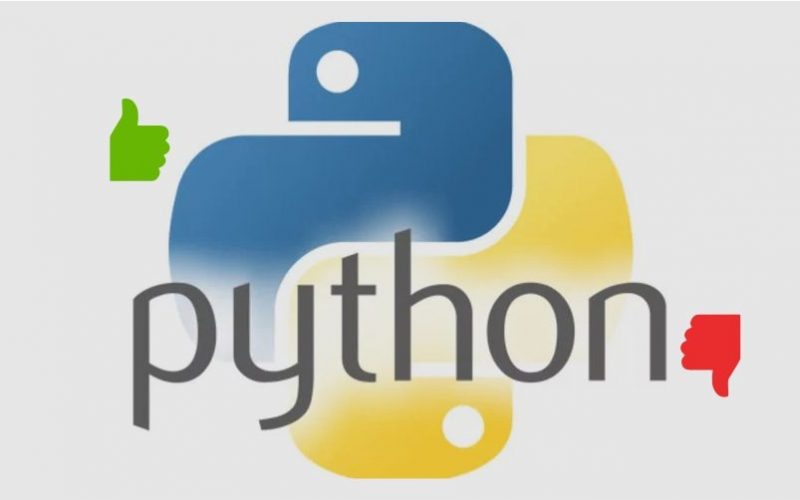Python is a general-purpose, high-level, interpreted, and dynamic programming language that focuses on code intelligibility. The syntax in Python assists the users in doing coding in lesser steps as compared to C++ or Java. The developer Guido Van Rossum founded Python in 1991. Because of its different programming paradigms, many significant organizations use Python. They usually involve object-oriented and imperative functional programming. Python contains a comprehensive and vast standard library having dynamic features and automatic memory management. While it may not be the best for building a mobile app like Tinder or another iconic app, Python is everywhere when it comes to well known online assets that we use everyday.
Features
- Python is extensible in C, C++, and C#
- It is a high-level language
- Python is portable
- It is object-oriented
- Python is dynamic, modular, interpreted, embedded and interactive
Advantages
- Python unites the Enterprise Application Integration that makes it simple to initiate Web services by invoking COBRA or COM components. It has strong control capabilities as it operates directly through C, C++, and Java via Jython. As it can run on all modern platforms and operating systems through a similar byte code, Python also processes XML and other markup languages.
- It is an extensible, as well as an embeddable language. One can put his Python code in the source code of a different language, like C or C++. It lets the programmer add scripting capabilities to his code in the other language.
- It offers extensive standard libraries that include areas like protocols, operating system interfaces, web service tools, Internet, and string operations. Python comprises most of the highly used programming task protocols that limit the length of the codes to be written in Python.
- Clean object-oriented designs and the expanded support libraries increase the programmer’s productivity two to tenfold while using languages like C, C++, C#, VB, Java, and Perl.
- Its enhanced control capabilities, unit testing framework, and active process integration features contribute towards the increased speed for most applications and the productivity of applications. It is an excellent option for creating scalable multi-protocol network applications.
Disadvantages
- The users of Python become habituated to its features and its elaborate libraries. As a result, they face problems in learning or functioning on other programming languages. Python experts may see the declaring of variable “types” or, cast “values” and syntactic necessities of attaching curly braces or semicolons as a difficult task.
- Python performs with the help of an interpreter rather than with a compiler. It causes Python to slow down because compilation and execution help it to work normally.
- Python is useful for many desktop and server platforms. Though, some consider it a weak language for mobile computing. For this, hardly any mobile applications are having built in Python like Carbonnelle.
- Python is a dynamic language. It has many design restrictions, as reported by some Python developers. Python needs more testing time, and the errors show up while running the applications finally.
- As compared to the welcomed technologies like ODBC and, JDBC Python’s DAL or Database Access Layer is seen to be a bit underdeveloped. However, one cannot apply Python in the organizations that require smooth interaction of complex legacy data.

Python is a strong high-level programming language that offers easy usage of the code lines. One can easily do maintenance works and debugging in Python quickly. As Google has made Python one of its official programming languages, it has gained much more significance.
